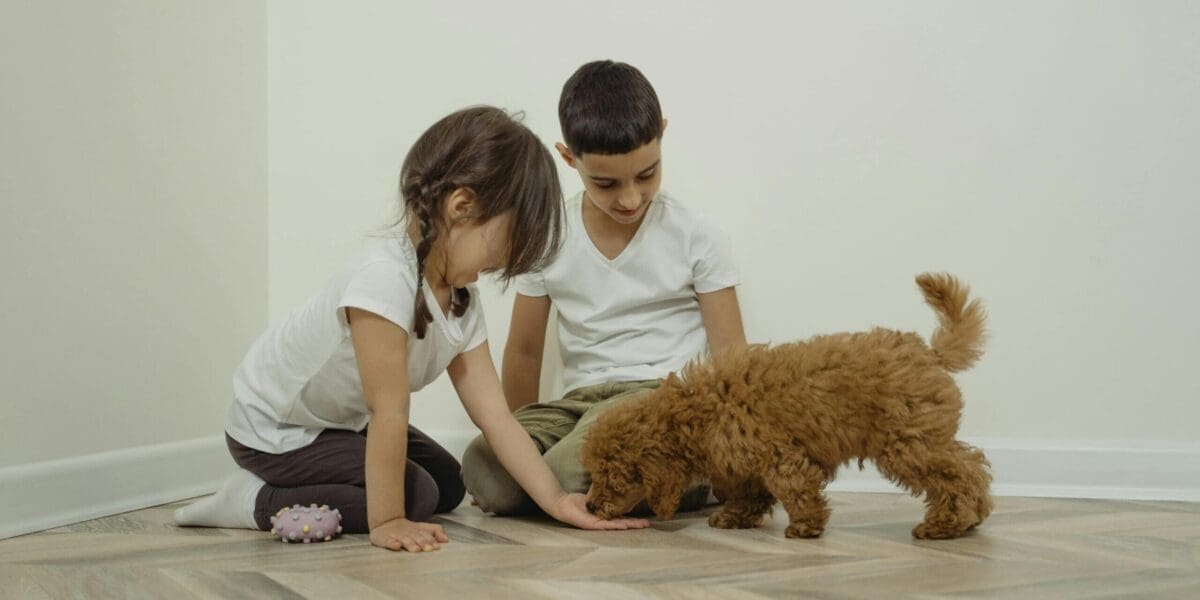Considering adding a furry friend to your family? When choosing a pet, involve kids, discuss openly, and plan carefully. Monitor young children closely. Understand responsibilities, fulfill pet care tasks, and use it to teach responsibility. Kids owning pets benefits their development – fostering empathy, emotional growth, and offering love. Pets help in promoting positive behavior, bonding with your pet, teaching empathy, and aiding emotional growth. For more insights on the impact of kids and pets, discover valuable information on choosing the right pet, responsibilities of pet ownership, benefits, and promoting positive behavior.
Some Key Points
- Pets aid in teaching empathy and responsibility.
- Pet therapy supports emotional growth in children.
- Owning a pet fosters positive behavior.
- Kids learn valuable life lessons through pet care.
- Pets provide unconditional love and connection.

Choosing the Right Pet
When selecting a pet for your child, your parental involvement, open discussion, and careful planning are key for a successful and positive experience. Consider your child’s age and maturity level to guarantee pet selection and compatibility. For younger children under 3-4 years, constant monitoring is essential due to their lack of impulse control. Kids under 10 years may need assistance caring for large animals. Even if you trust your child’s abilities, overseeing pet care is vital. Address any neglectful behavior towards pets gently but firmly. Remember, parents are role models for responsible pet ownership. By choosing age-appropriate pets and involving your child in the process, you can foster a loving and lasting bond that benefits both your child and the new furry family member. Additionally, it’s important to research the specific needs and lifespans of any potential pets to ensure a good match for your family. For example, if considering a reptile, be sure to look into bearded dragon lifespan details, as they can live up to 10-15 years with proper care. Teaching your child about the long-term commitment required for pet ownership will help instill responsibility and compassion.
Responsibilities of Pet Ownership
Moving from selecting the right pet for your child, understanding and fulfilling the responsibilities of pet ownership is essential for nurturing a healthy and rewarding bond between your child and their new furry companion. Teaching responsibility through pet care tasks like feeding, grooming, and cleaning up after your pet is a valuable lesson for your child’s emotional development. By involving your child in these responsibilities, you are not only teaching them how to properly care for another living being but also instilling a sense of empathy and compassion. Emphasizing the importance of consistent and loving care for their pet will help your child build a strong connection with their animal friend, fostering a relationship built on trust, respect, and mutual understanding.
Benefits of Kids Owning Pets
Owning a pet can positively impact a child’s development in various ways, fostering empathy and responsibility. Pets offer emotional development by providing companionship and a source of unconditional love. Through caring for a pet, children gain confidence in their abilities to nurture and protect another living being. The bond between a child and their pet nurtures empathy, teaching them to understand and share the feelings of others. This connection promotes a sense of responsibility as children learn to prioritize the needs of their furry friend. By having a pet, kids experience the joy of companionship and the satisfaction of being relied upon, which contributes to their growth as compassionate and caring individuals.
Promoting Positive Behavior Through Pets
To encourage positive behavior in children, fostering a bond with a pet can be a powerful tool in teaching empathy and responsibility. Pet therapy can aid in emotional growth, while bonding with a pet can facilitate behavioral development. By caring for a pet, children learn to prioritize the needs of another living being, which nurtures empathy and compassion. Through this bonding experience, kids develop a sense of responsibility as they understand the impact of their actions on another creature’s well-being. This connection with a pet can also foster emotional growth, helping children express their feelings and form a deep, trusting relationship. Ultimately, promoting positive behavior through pets creates a supportive environment for children to learn valuable life lessons and develop essential character traits.
Conclusion
Now that you’ve learned about the importance of selecting the right pet, the duties of pet ownership, and the advantages of kids owning pets, you’re ready to start on this thrilling journey with your new furry friend. Remember, by encouraging positive behavior through pets and being a conscientious pet owner yourself, you can cultivate a loving and harmonious bond between your child and their animal companion. Enjoy the numerous joys and lessons that pet ownership can bring to your family!
Some Questions & Answers

How Can Parents Help Children Cope With the Loss of a Beloved Pet?
When helping children navigate the loss of a cherished pet, offer comfort and support during the grieving process. Encourage them to express their feelings openly and share memories of their furry friend. Engage in activities like creating a memory book or planting a tree in honor of their pet to cope with the loss. Assure them it’s okay to feel sad and that time will help heal their hearts.
Are There Specific Breeds of Pets That Are Better Suited for Children With Allergies?
When considering allergies and pet dander, it’s crucial to research hypoallergenic breeds and their considerations. Some breeds like Poodles, Bichon Frises, and Portuguese Water Dogs are known for being more suitable for individuals with allergies. Remember to consult with a healthcare provider for guidance on managing allergies. Choose a pet that aligns with your family’s needs and health concerns to guarantee a harmonious environment for everyone.
What Steps Can Be Taken to Introduce a New Pet Into a Household With Existing Pets?
When bringing a new pet into a home with existing pets, start slow. Introducing new pets gradually helps everyone adjust. Use positive reinforcement in training techniques to encourage good behavior. Monitoring interactions and providing separate spaces initially can ease the process. Remember, patience is key when blending furry family members. With time, love, and proper guidance, your pets will form a harmonious pack.
How Can Pets Be Integrated Into a Child’s Education and Learning Process?
When integrating pets into a child’s education, explore pet therapy for emotional support and the educational benefits of caring for animals. Embrace outdoor and nature-based learning opportunities with pets to nurture a deeper connection to the environment. Encourage serving others by involving kids in pet-related community service activities. Remember, pets can teach valuable life lessons and provide companionship, fostering empathy and responsibility in children.
Are There Any Local Resources or Organizations That Offer Support for Families With Pets in Need of Behavioral Training or Assistance?
If you’re seeking assistance for your pet’s behavior, local resources like pet therapy programs, support groups, training classes, and animal shelters can offer valuable support. These organizations provide guidance and tools to help address behavioral concerns effectively. By reaching out to them, you can access professional help and connect with a community that understands your needs and is dedicated to serving families with pets in need of training or behavioral assistance.































